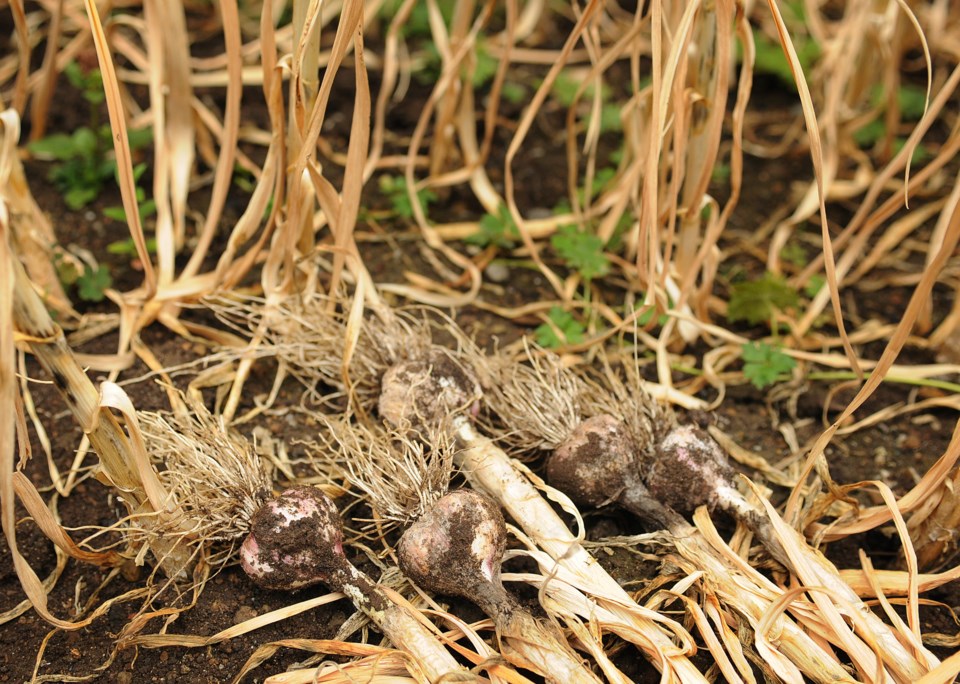Q: When is the proper time to harvest Russian garlic? I have 600 bulbs planted in West Kelowna. The tops are drying out (green disappearing). In a single bulb the individual cloves are not well formed. In previous years I harvested at the end of the first week in August.
John Kriss, Vancouver
A: You’ve been harvesting your garlic at the right time. My garlic is also drying ahead of the normal schedule. Individual cloves in my garlic are also unusually small. The one thing that may help your garlic is to begin watering and see if that retards the drying process. I hope you have enough water available for this.
If water is a problem in your situation, it would still be interesting to select a patch of garlic small enough for a steady watering program. I may try this for my own overly dry garlic patch. Hopefully there would be something to be learned from the result.
I am also considering whether there is any point in using weeds as a mulch once a patch of garden is watered. I’ve seen this done, apparently successfully, in a restaurant garden on Vancouver Island
Q: I’ve been told my lilies are affected by a virus. The blossoms are distorted and don’t open fully. I have picked off all affected blossoms and destroyed them. What can I do to cure this?
Emilie B., Chilliwack
A: Sorry to tell you, but viruses on lilies can’t be cured. All you can do is pull up the distorted ones, bulbs and all. Then trash them. Don’t compost them.
Viral infections live in the soil for about five years and during that time, it’s important not to grow any other lilies in the same area because they’ll get infected too.
If you have any lilies growing elsewhere in your yard, you’ll need to check them often for aphids. Try to destroy any aphids on your lilies before they get a chance to take hold. Generally, it’s aphids that spread viral infections.
Q: I have an old “Doyenne du Comice” miniature pear tree, which has been plagued by rust spots for several years. Last year a friend helped me spray it with lime and sulphur and I have pruned off all the old infected growth. How can I help it regain its nutritional balance?
Barbara, Vancouver
A: Rust is a fungal disease, which overwinters on junipers. If your garden has any junipers, I’d recommend you remove them. If they’re in your neighbour’s garden, that’s very awkward. As long as junipers are within 150 metres, you’ll get some pear rust every year.
The organic way to deal with it is remove all the junipers that you can, prune away any heavily infected twigs and pick off the other rust-coated leaves. If you can get rid of the infected leaves before August, the rust won’t be able to overwinter on the junipers and infect your tree again next year. Once the picked leaves are dead, the fungus will be too.
Lime sulphur is a general cleaner. It won’t do much to stop rust, but it will kill some pests. Unfortunately it kills beneficial insects too. Pear trees like rich balanced feeding such as compost or all-purpose fertilizer and watering in dry spells.
Anne Marrison is happy to answer garden questions. Send them to her via [email protected]. It helps if you include your region or city.



